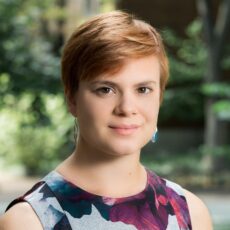
The Win-Win of Agricultural Solar Energy
A student reflects on why our renewable future needs people of all ages and backgrounds to act and use their resources, space, and platforms to enact change.
Second Place Winner: 2022 Student Blog Competition
When they immigrated to the United States, a branch of my family bought a dairy farm near Homer, New York. They worked hard to produce milk and corn for a regional market. Every day, they herded cows to the sloping hill across Route 11 for grazing. It was a small but active business.
Today, the land is run by my great uncle. The demands of the dairy market and mechanization of the industry have required farmers to replace their modest red barns with corporate warehouses. Even then, staying competitive is challenging for the once vital local dairy farms. My uncle is determined to make it work.
Vast amounts of land is needed to operationalize renewable energy generation, and this offers an opportunity to reconsider the enterprise of struggling farms. My uncle tells me that the future of our farm is in solar power. The hill where cows once grazed, along a major highway, is an ideal place for rural solar energy generation. Homer, NY experiences milder climate fluctuations than other portions of the state and is centrally located for energy distribution.
My uncle is on the local Zoning Board of Appeals (ZBA). Despite his pull there, approval for solar panels was arduous. They allowed ten. This board and other local regulations limit the ability for unused farmland to be repurposed for energy. Administrators and board members believe solar panels are unattractive on the hills. Last month, the ZBA and the planning commission were merged due to continued lack of quorum. The few members who have been attending have been the sole deciders of what is built.
My uncle strives to be part of the solution. The energy from the panels powers the farm and other family members’ homes on the land, but is not enough to share or sell. He endeavors to put unused acres to work supporting the needs of the community again. Otherwise, the land lies wasted—surrounded by family homesteads and highways, a protected view for passersby.
My uncle and I talk often about renewable energy systems. When considering my research in environmental justice, sustainable regulation, and social justice, I think about the small farm in Upstate New York and my uncle’s vision for the land.
There is an opportunity to meet the needs of both rural and urbanized areas across New York State. The NYC Mayor’s Office of Climate and Environmental Justice is struggling to meet its energy goals. The city relies heavily on nuclear and hydroelectricity brought in from upstate and fossil fuel generation from downstate. Less than 2% comes from solar. Meanwhile, the Buffalo, Rochester, and Syracuse metro areas continue to grow. The thousands of family farms surrounding these cities struggling to make ends meet could be repurposed for solar energy.
In other states similar struggles persist. Solar infrastructure is denied in agricultural and urban spaces, often for aesthetic reasons. State and federal policies cut costs and obstacles for solar, but local zoning and design regulations are the final hurdle
The future of energy policy needs more people like my uncle. At almost 80 years old, he is a public servant, business leader, activist, and thought leader seeking to make broad changes for the community. A renewable future needs people of all ages and backgrounds to act and use their resources, space, and platforms to engage change one project at a time. If each of us enact small change, large change will occur. Once the precedent is set for one farm, more can follow.
References
Stock, J., & Stuart, D. (2021). Robust Decarbonization of the US Power Sector: Policy Options (No. w28677; p. w28677).
National Bureau of Economic Research. https://doi.org/10.3386/w28677; NYSERDA. (2020).
White Paper on Clean Energy Standard Procurements to Implement New York’s Climate Leadership and Community Protection Act (White Paper CASE 15-E-0302; p. 81).
William, Meg. (2022) “Low-Carbon Land Use Laws.” Zoning Practice, The American Planning Association. v.4. Calthorpe, P. (2011). Urbanism in the Age of Climate Change. Island Press.
Chris Quattro
City and Regional Planning Doctoral Candidate, Weitzman SchoolChris is a PhD candidate and Fontaine Fellow in the City and Regional Planning department at the Weitzman School of Design.

